My ITS only tree shows that Arrhenia, as well as
Lichenomphalia below, fall into 2 distinct clades far enough from each
other and it appears that a few of the species might need to be moved to
their own genus. In this case, a few of the omphalinoid Arrhenias
appear to be only distantly related to the others. I would like a multi-gene
study to verify this, as mine is not the only study to show that all
Arrhenias don't necessarily belong together. All oyster-like
Arrhenias belong in Arrhenia proper. Rimbachia B is a
genus separate from both. Dictyonema basidiolichens seem paraphyletic
inside Arrhenia, giving more evidence that Arrhenia needs to
be split.
1. Moss associates with eccentric
stems and possibly poorly developed gills
These species don't
appear to all
group together (they may have gained or lost this shape in more than one
event) so we probably can't give them their own genus. We just have to accept that
there are two very distinct looks for Arrhenia. Similar looking
mushrooms are found in Rimbachia (Tricholomatineae) and
Muscinupta
(Hymenochaetales), but those are pure white.
Arrhenia 'subglobisemen
PNW06' - brown, short lateral stem, fairly
well developed gills. It was reported that we have Arrhenia acerosa
EU here, but three sequences turn out to be 2% different than A.
subglobisemen instead and much further away from A. acerosa. If
anybody thinks A. acerosa is really here, save a collection because
we have EU DNA to compare to. It is a complex where ITS DNA can vary by 2%,
and has spores that vary widely in shape, often being almost round like in
A. subglobisemen, so that may have created the confusion, and if the
spore shape corresponds with certain ITS sequences in the complex, it could
also mean A. acerosa will be split up into more than one species.
Arrhenia CA11 (Arrhenia lobata EU
misapplied) - brown, almost stemless, poorly
developed wrinkle-like "gills". Our local species doesn't
match any of the EU concepts and needs its own name. There may be other
species in the complex too that haven't been found yet.
Arrhenia
'auriscalpium PNW07' - long lateral stem, slightly veined underside. One
North American sequence is 2% different than type area EU sequences. We
don't have local sequences (we need them) but ours is probably a sister
species and not the real thing.
Arrhenia 'retiruga PNW08' -
paler tan or grey felty cap, stemless, almost smooth underneath. One
WA sequence is 3% different than 2 competing concepts in the EU for what
this species is. Ours likely needs a new name.
Arrhenia 'retiruga PNW12'
- another species in this complex, found once in Idaho.
Arrhenia PNW14 -
found on a mossy oak log, resembles A. retiruga, but isn't in the same clade as that and
PNW08 and PNW12.
Rimbachia B neckerae EU - a tiny white cup fungus a few mm across on moss, without gills
and attached from the centre of what would be the top of the cap. Elliptical
spores (unlike the round spored Rimbachia A arachnoidea NY). R.
neckerae was reported once from the PNW. Rimbachia B is in a genus near
Arrhenia. We
won't know which is the real genus, A or B, until we sequence the type of the genus,
Rimbachia paradoxa EU. We have one possible EU sequence of R.
neckerae, but we have no local sequences so we need
collections.
Rimbachia A belongs in the
Omphalinaceae and the following two species are discussed there:
Rimbachia A arachnoidea NY
- a tiny white cup fungus a few mm across on moss, without gills
and attached from the centre of what would be the top of the cap. Round
spores. We have EU sequences, but no ENA type area sequences to know for
sure what this species is. Nor do we have any local sequences, we need
collections.
Rimbachia A bryophila EU
- a tiny white stemless oyster a few mm across, with rudimentary
gills, growing on moss, not wood. We have three matching CA
sequences and an OR sequence, but no EU sequences to compare with to make
sure ours is the same species.
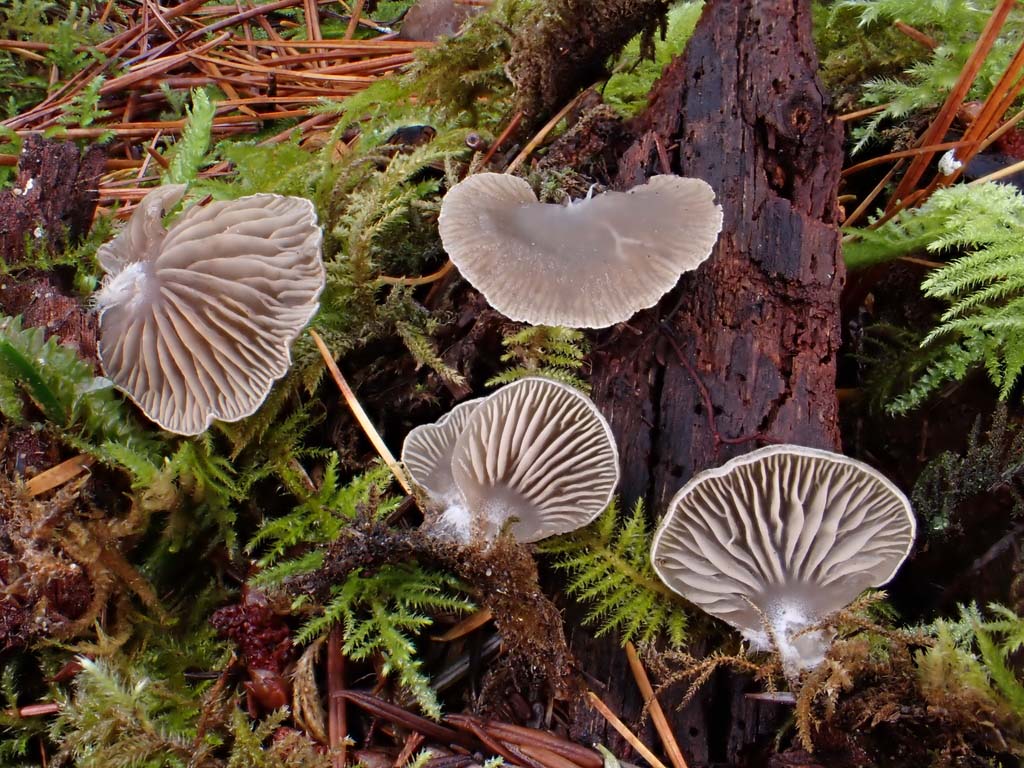
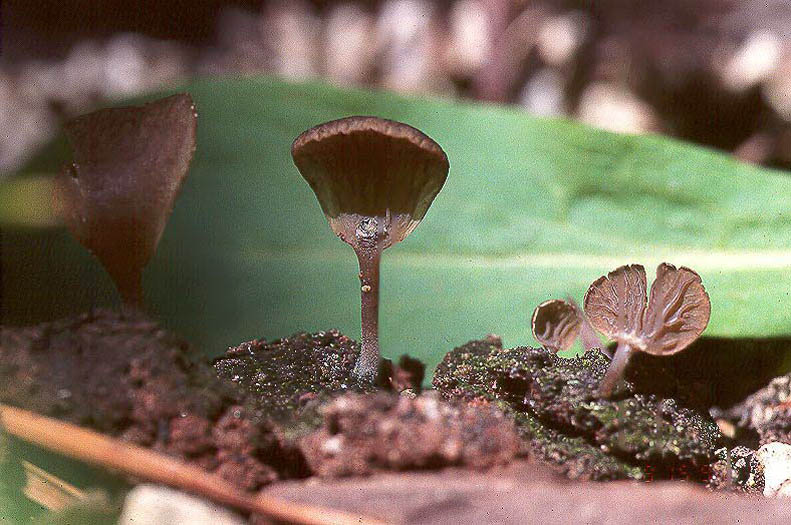
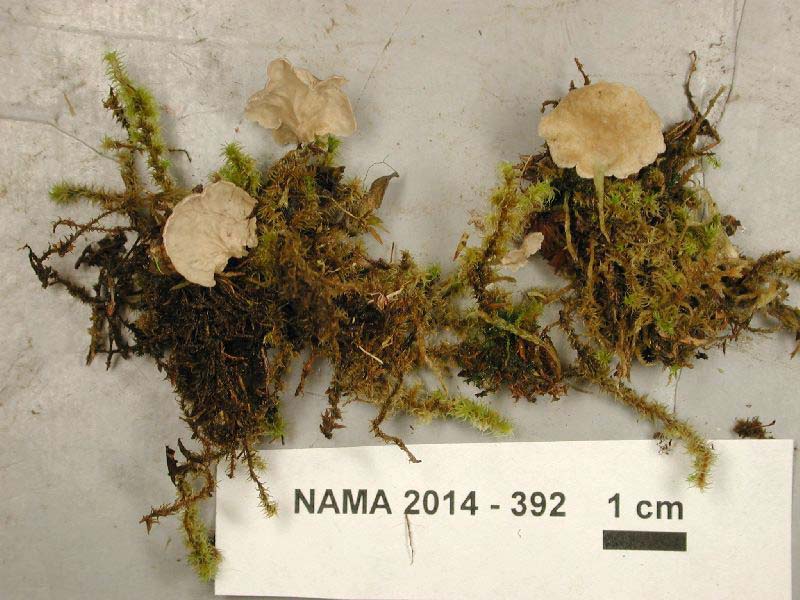
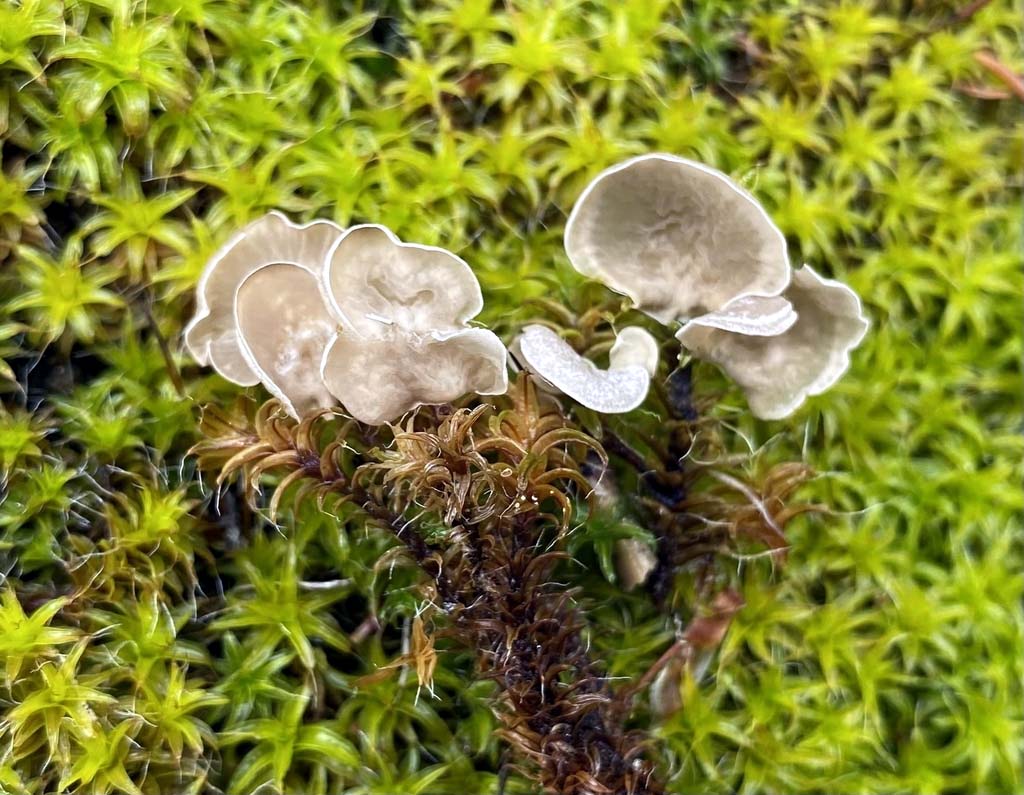
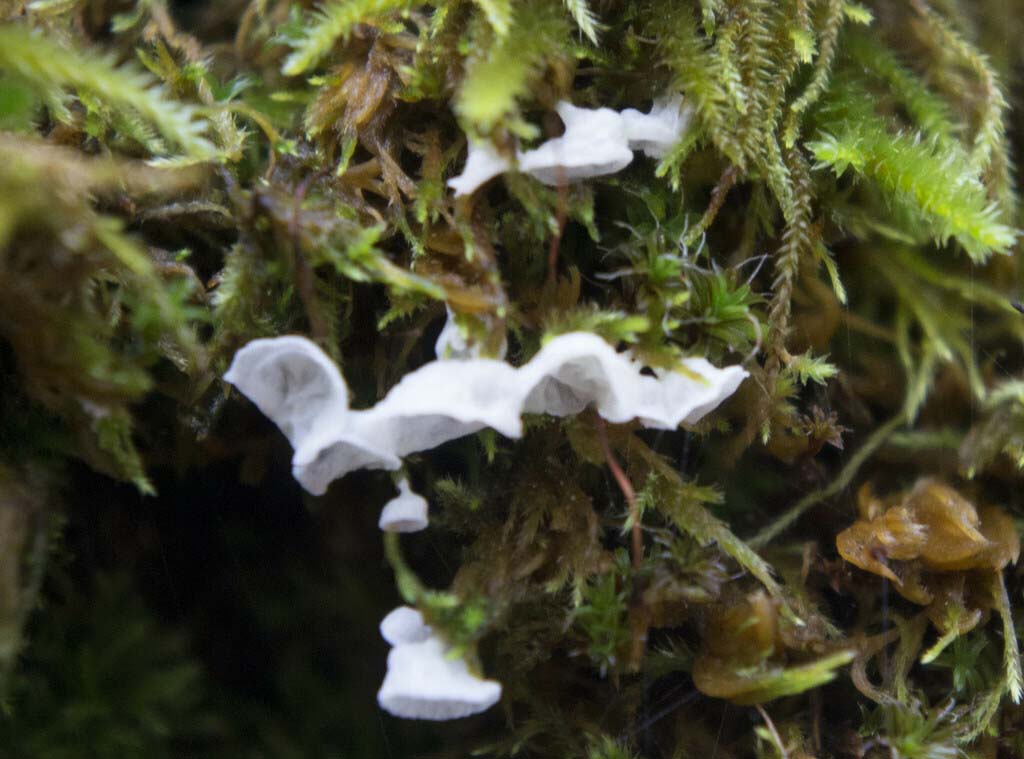
Arrhenia 'subglobisemen PNW06' © Matthew Koons, A. 'auriscalpium
PNW07' © Ben Woo, A. 'retiruga PNW08' © NAMA and
the Field Museum of Natural History, A. 'retiruga
PNW12' © Ed Barge, A. PNW14 © Michael Beug
2. Brown (rarely green) omphalinoid mushrooms
'Clitocybe' atroviridis WA (=Arrhenia
chlorocyanea EU?) - This unique, beautiful dark green
omphalinoid, found on the ground often in moss, was described from WA as
Clitocybe atroviridis but that is thought to be a synonym of the
older EU species Arrhenia chlorocyanea. We don't have any EU
sequences of that mushroom to compare to, and given that our local species
of other Arrhenias has turned out to be different than the EU
counterpart that was thought to be the same, we need EU sequences to find
out for sure. If not, we'll need to rename ours to Arrhenia
atroviridis.
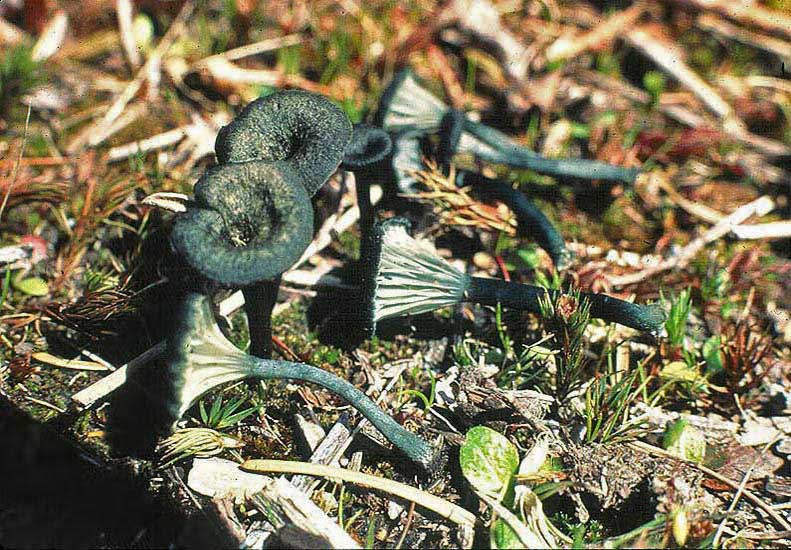
unsequenced Arrhenia chlorocyanea © Ben Woo
'Arrhenia2' telmatiaea
UK (='Omphalina' fusconigra UK)
- recognizable by its dark brown smooth cap and growth in sphagnum.
It is in the "other" clade. Two OR sequences match the type sequence of this
newly described species. One theory is that Bigelow's reports of Arrhenia
onisca, which could not have been that species as it is a synonym of
Lichenomphalia ericetorum, represent A. telmatiaea.
'Arrhenia2' philonotis EU - a paler
brown smooth cap and growth in sphagnum. Also in the "other"
clade. Two OR sequences match the type sequence.
'Arrhenia2' velutipes UK
- one WA collection of a dark species in polytrichum moss turned out to
match this species.
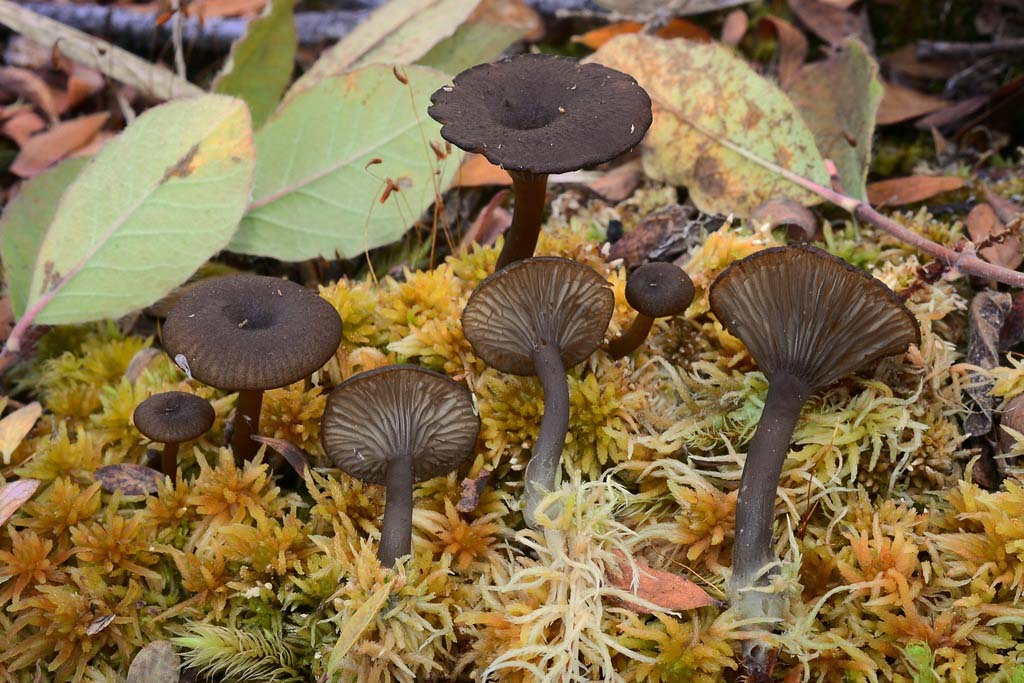
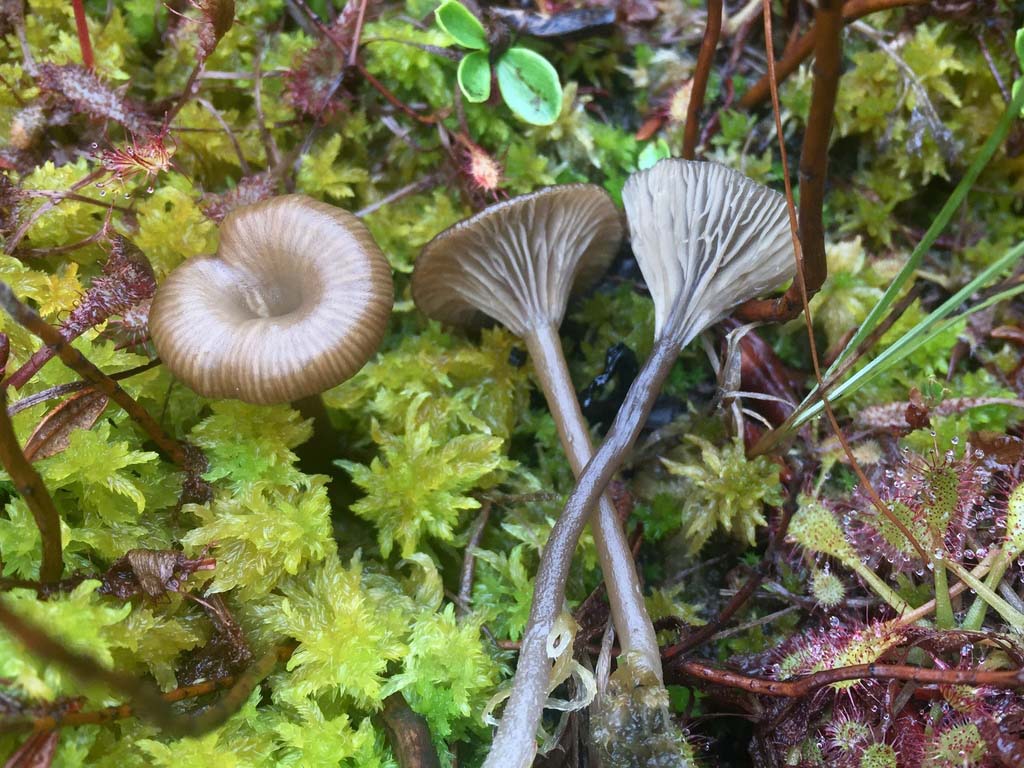

'Arrhenia2' telmatiaea and 'Arrhenia2' philonotus © Connor Dooley,
'Arrhenia2' velutipes © Graham Steinruck
'Arrhenia2'
bigelowii MI (=Arrhenia gerardiana var. fusca NY) - recognized by
having a scaly cap in sphagnum moss. One WA collection matches
the type sequence. Formerly, it was thought that this species/variety always
had a darker cap than Arrhenia gerardiana, but our local collection
confirms this is not the case. Dark capped collections are A. bigelowii.
Not-so-dark capped collections could be either A. bigelowii or A.
gerardiana (indistinguishable so far except for by DNA, as the supposed
different sized spores of A. gerardiana doesn't seem to hold up). Therefore,
local reports of A. gerardiana need confirmation as it is not yet
confirmed by DNA from the PNW. This is in the "other" clade of Arrhenia.
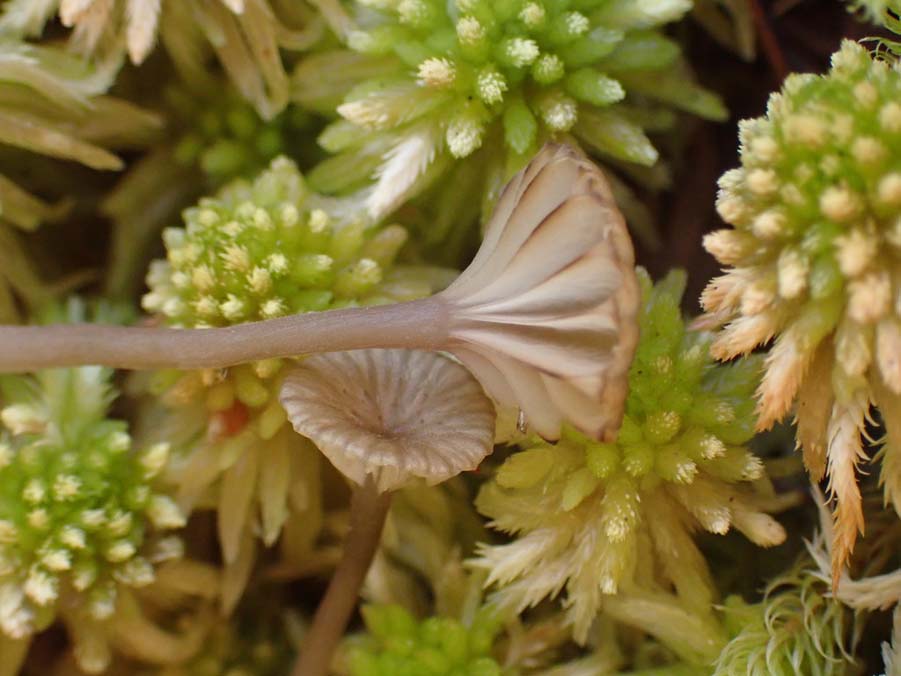
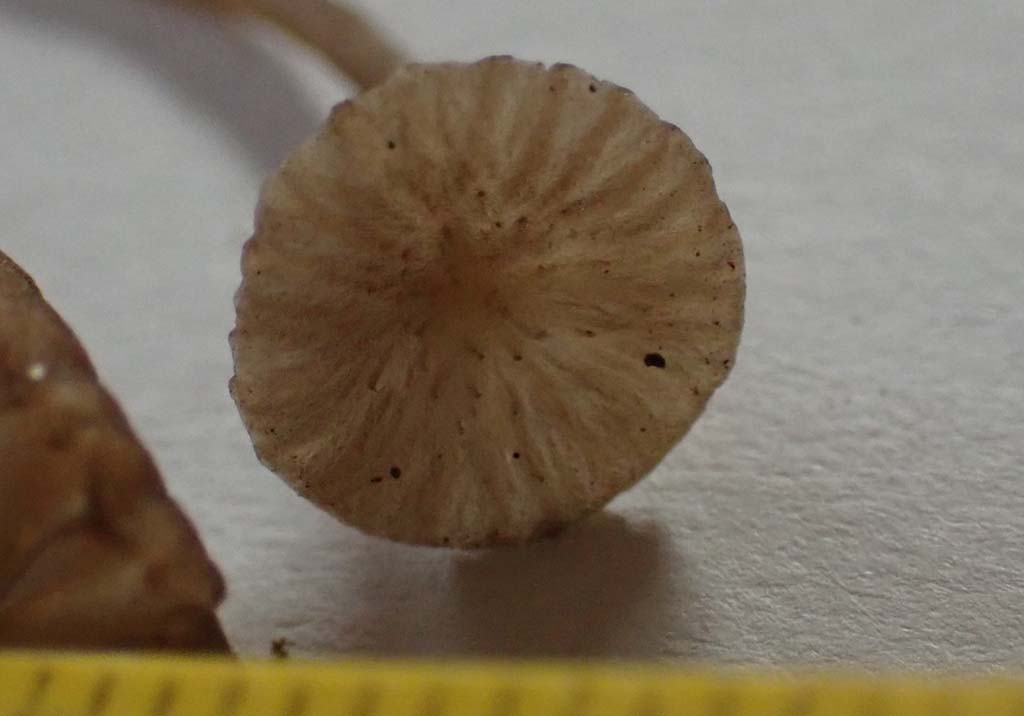
'Arrhenia2'
bigelowii © Sadie Hickey (2 images)
Arrhenia 'latispora PNW09' - a
moss species (not just sphagnum?) with wide spores (7.8-9.5 x 6.5u) and said to have a
geranium odor at least in the EU, where it was described. 2 collections from OR
and 1 from WA match the EU epitype
sequence closely except for a couple locations in ITS2, however that species is described as a pleurotoid oyster-like
mushroom, very different than what ours looks like, so I believe it is
unique. The same thing is happening with Arrhenia TN01 and A.
acerosa.
Arrhenia
'obscurata PNW11' - Arrhenia obscurata UK (=Clitocybe
atrobrunnea UK) is found on sandy soil
or moss, reported from ID and BC. We don't have any UK sequences, but Voitk provides some ENA
sequences. Our one WA collection is at least 2% different in ITS. It's
possible ours will match true UK sequences of A. obscurata, but until we prove that, I'm giving it a code.
Arrhenia TN01 -
very dark in soil with moss. This is in a clade of species mostly
labeled Arrhenia acerosa, a pleurotoid with rudimentary gills and a
lateral stem. However, this species has normal gills and a central stem.
This unexpected shape difference also occurs with A. 'latispora PNW09'
above. Our local pleurotoid species, Arrhenia 'subglobisemen PNW06'
is not even in this clade.
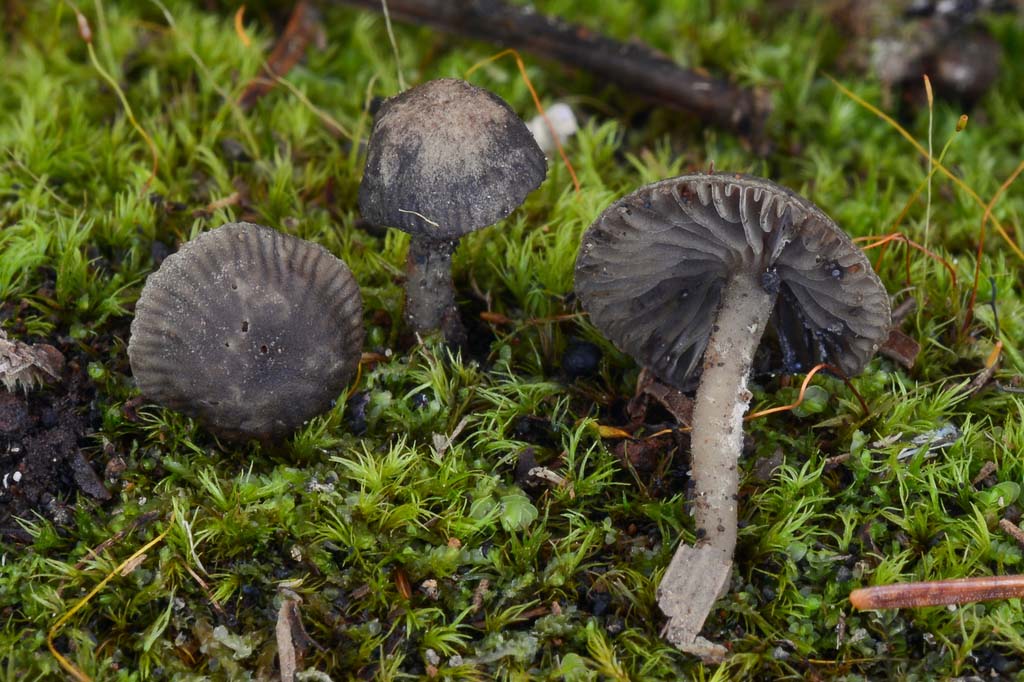
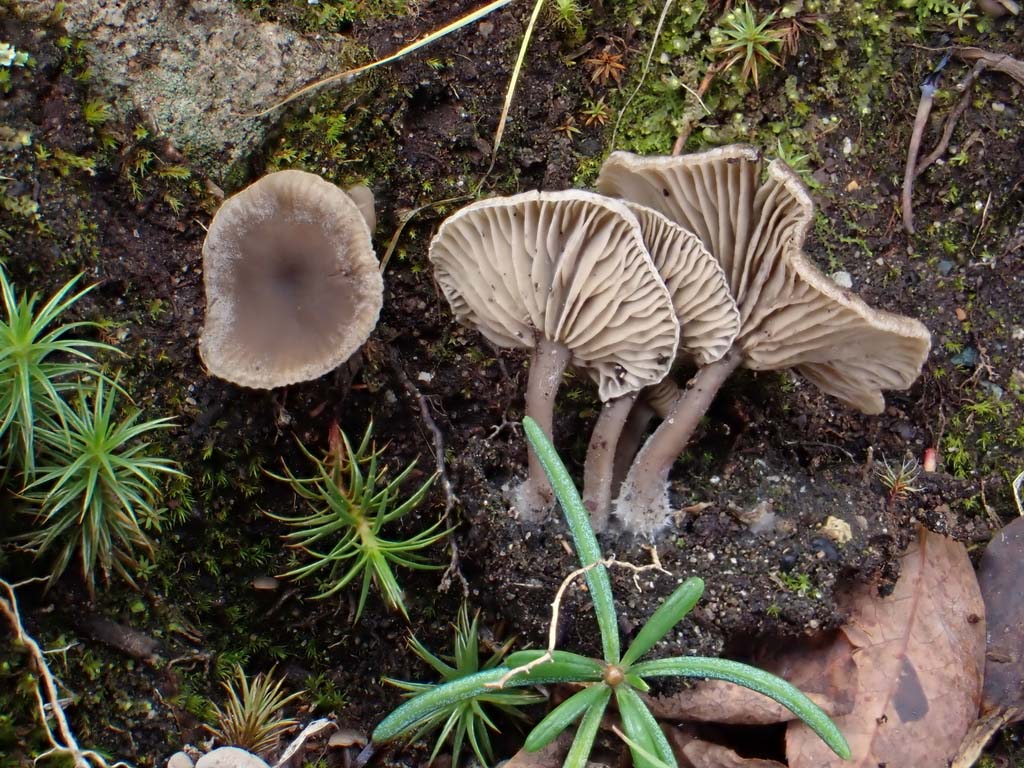
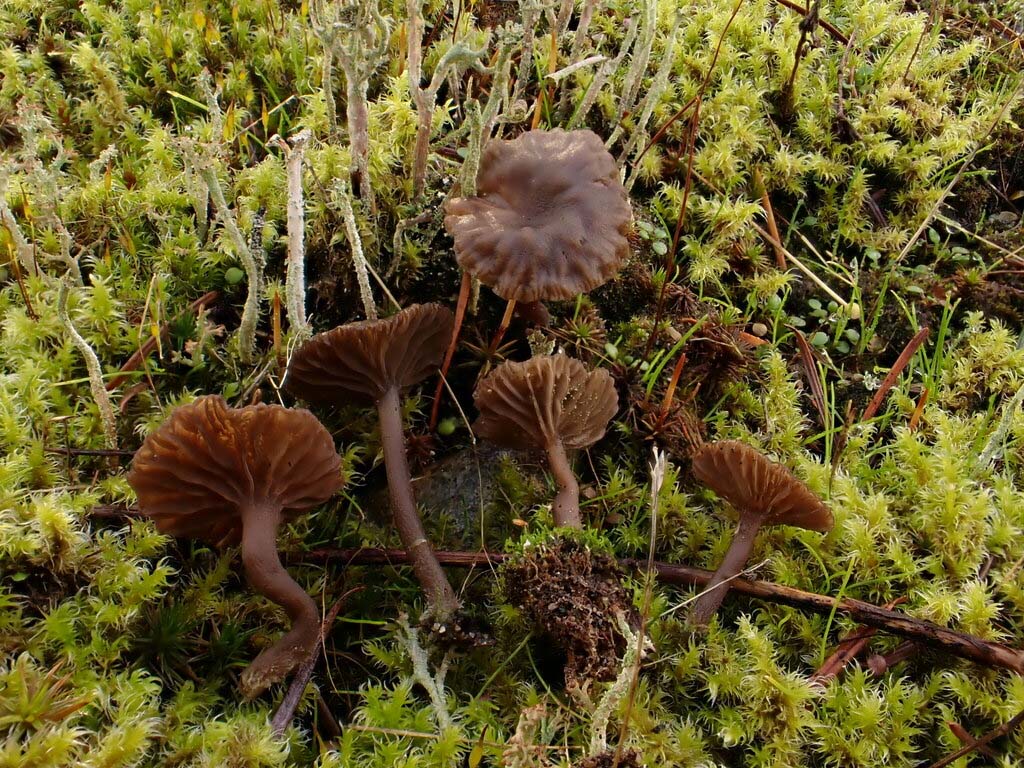
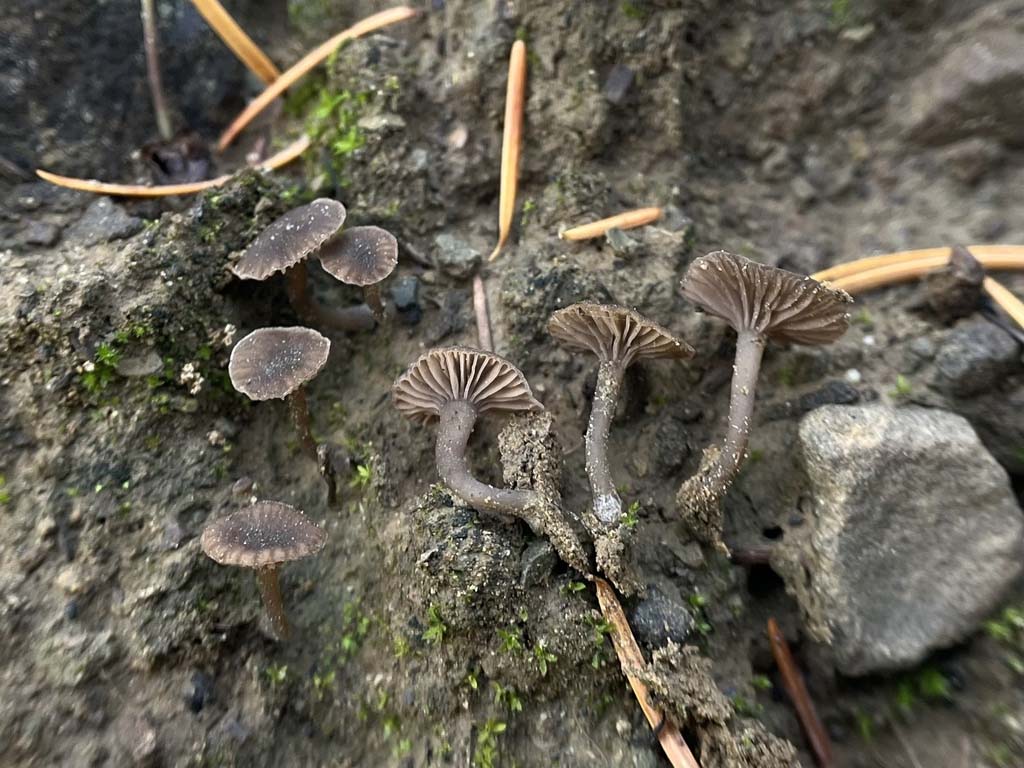
Arrhenia 'latispora PNW09' © Connor Dooley and Matthew Koons, Arrhenia 'obscurata PNW11' ©
Matthew Koons, A. TN01 © Connor Dooley
Arrhenia 'peltigerina PNW15' -
on Peltigera lichen. This is a complex of species in its type
area of NY, a number of which were described in 2024, but it appears that
our west coast species is none of them and still in need of its own name. We
have one WA collection so far. A. peltigerina was reported by Bigelow
from Idaho, but I'm not sure which species in the group he actually found.
Arrhenia 'peltigerina PNW16'
- one OR collection is a different species in this group.


Arrhenia 'peltigerina PNW15' © Matthew Koons,
A. 'peltigerina PNW16' © Connor Dooley
The following lookalike dark brown omphalinoid
species, from the ground or moss, are reported from here but without
sequenced, photographed collections yet.
'Arrhenia onisca' EU -
Bigelow reported this from the PNW on moss or burned moss, but it's now
known that this name is a junior synonym of Lichenomphalia ericetorum,
so nobody knows what Bigelow really found. My leading theory is Arrhenia
telmatiaea, described above.
'Arrhenia sphagnicola' EU - This name too has officially been declared a
synonym of Lichenomphalia ericetorum, so it is no longer being used.
This name has been used for reports of A. bigelowii and A.
telmatiaea back when A. sphagnicola was incorrectly thought to be a synonym of
Omphalina gerardiana and O. fusconigra, but this name should not
be used anymore.
Arrhenia rainierensis WA
- on soil or moss with interesting shaped spores. Described from here but we
don't have any reliable sequences. I don't even know which clade it's in.
This species is similar to A. velutipes (with a pubescent stem and
similar sized spores). I wonder if it could be a redescription of it.
Arrhenia pubescentipes ID
- on soil or moss. No local sequences, so no idea which clade it's in.
This species is also similar to A. velutipes. I wonder if it could be
a redescription of it.
'Arrhenia2'
hohensis WA - on soil or moss. Described from here but we have no
sequences. One mycologist suggested it might be similar to or the same as
the EU species Arrhenia obatra, if so, that species appears to be one
of those possibly needing to be moved to the new genus, so maybe A. hohensis
does too, but maybe not.
These two local species below are in
the true Arrhenia clade.
Arrhenia PNW01 - 1 collection from OR
Arrhenia PNW10 - 2 collections from WA, in Polytrichum moss, with
a somewhat greasy cap with a wavy margin.
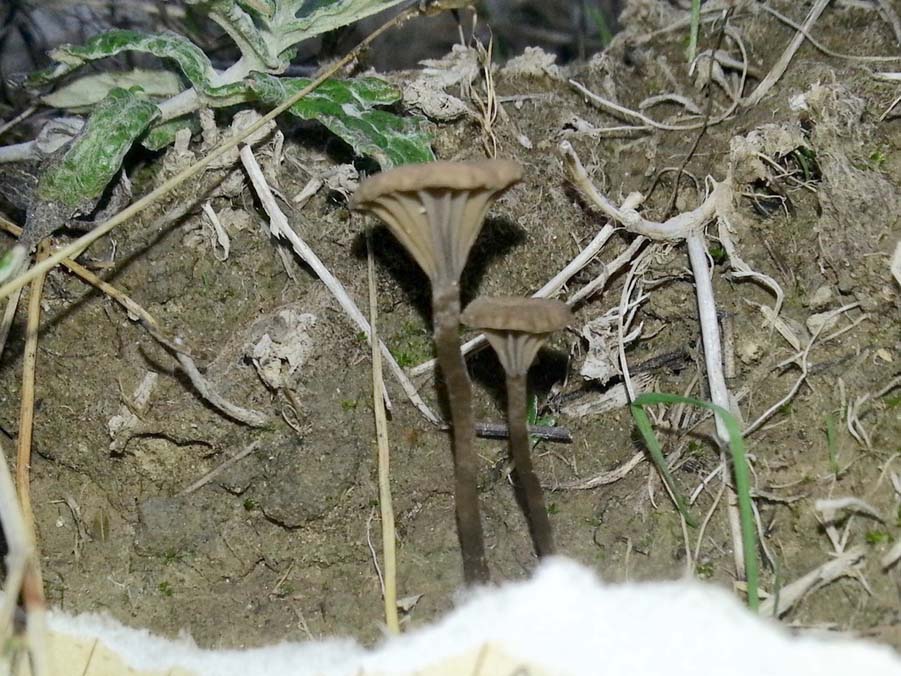
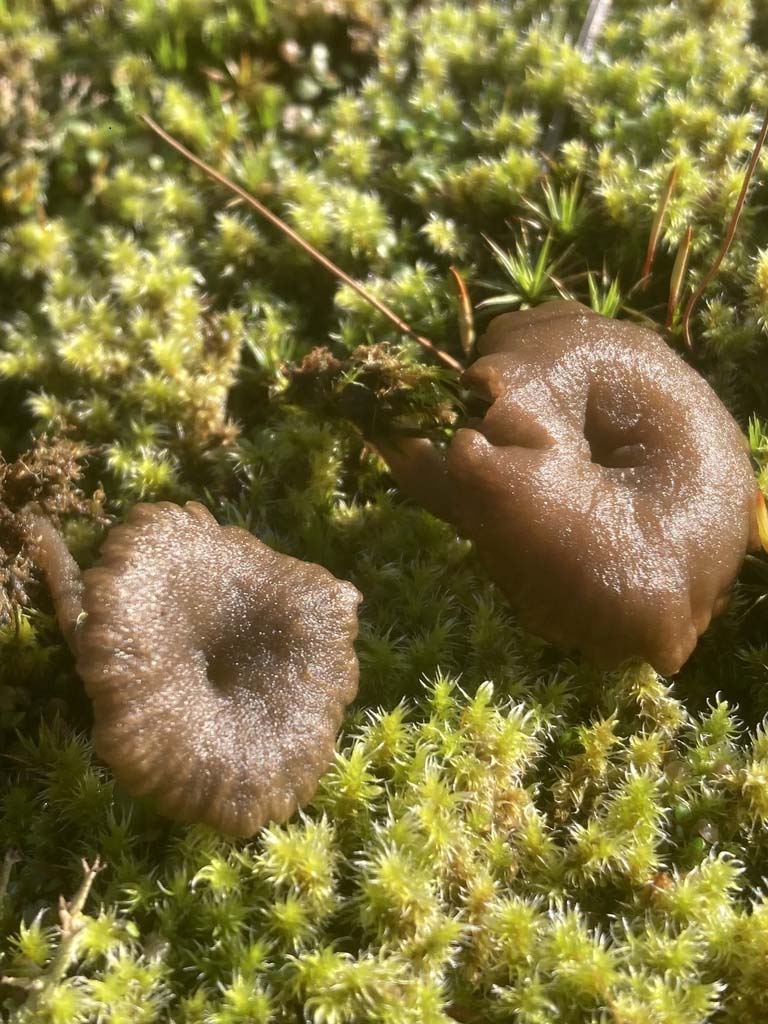
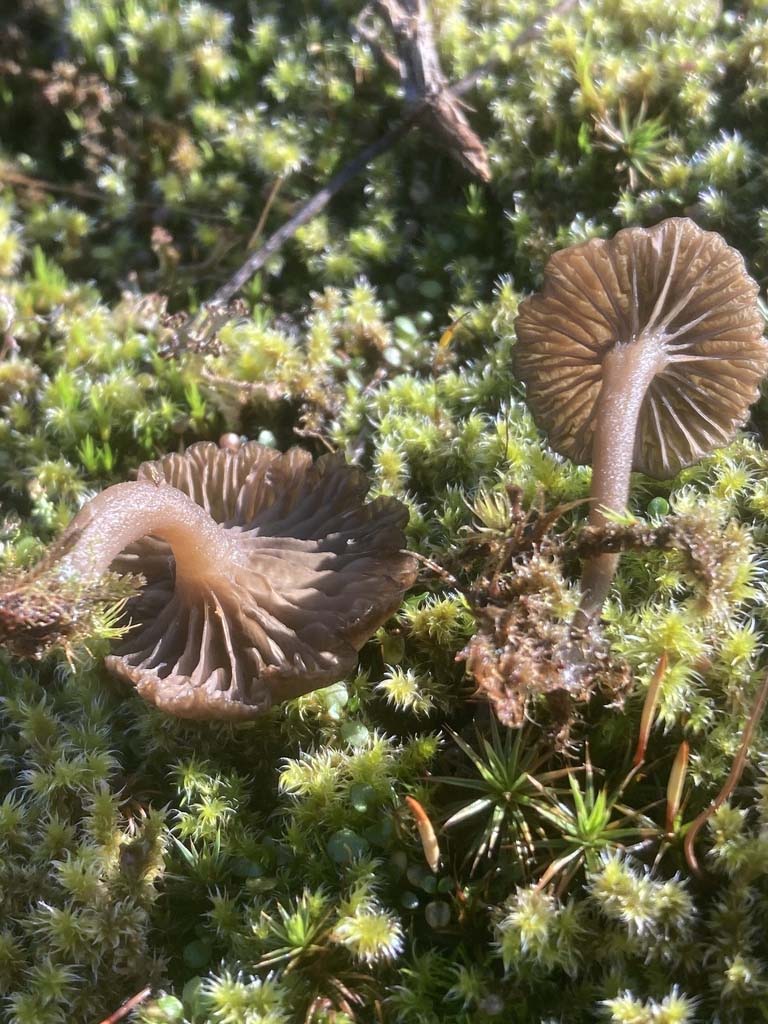
Arrhenia PNW01 OR © Bitty Roy, Arrhenia PNW10 ©
iNaturalist user fish_narc (2 images)
These species are
in the "other" clade.
'Arrhenia2'
'epichysium PNW03' - a very dark, terrestrial
species not with moss, in a clade with the other A. epichysium
species. Found 3 times in WA so far. Bigelow found something he called A.
peltigerina in Idaho in 1954, but it sequenced to be this.
'Arrhenia2' 'epichysium
CA01'
- very dark, terrestrial, on non-sphagnum moss. Found once in
WA. It is close to one possible concept of the EU species A. epichysium,
which is found on wood.
'Arrhenia2' 'epichysium
CA02/NB01' - very dark when fresh (drying pale), on wood, close to the other
possible concept of A. epichysium. The habitat on wood matches the
true A. epichysium. West coast sequences (CA02) and east coast
sequences (NB01) are almost the same, but WA/CA collections were
darker than ENA collections. Then one AK collection was quite hygrophanous
and showed it probably starts out dark and gets quite pale on drying out.
Although there are competing concepts in the EU for what 'Arrhenia'
epichysium is, none of them are found here, as has been reported. Those
reports may be one of the above three species.
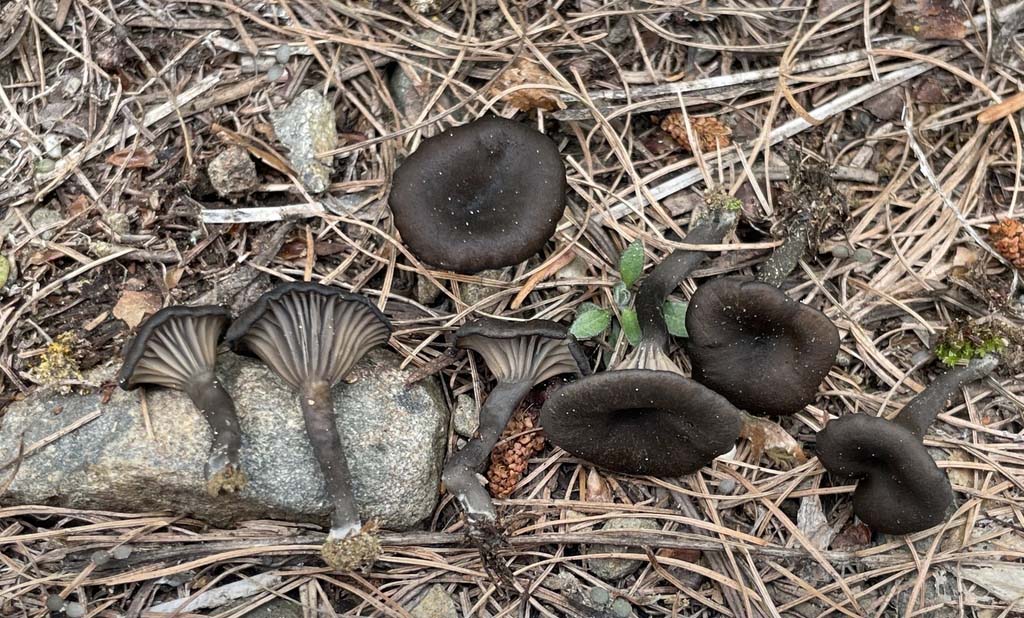
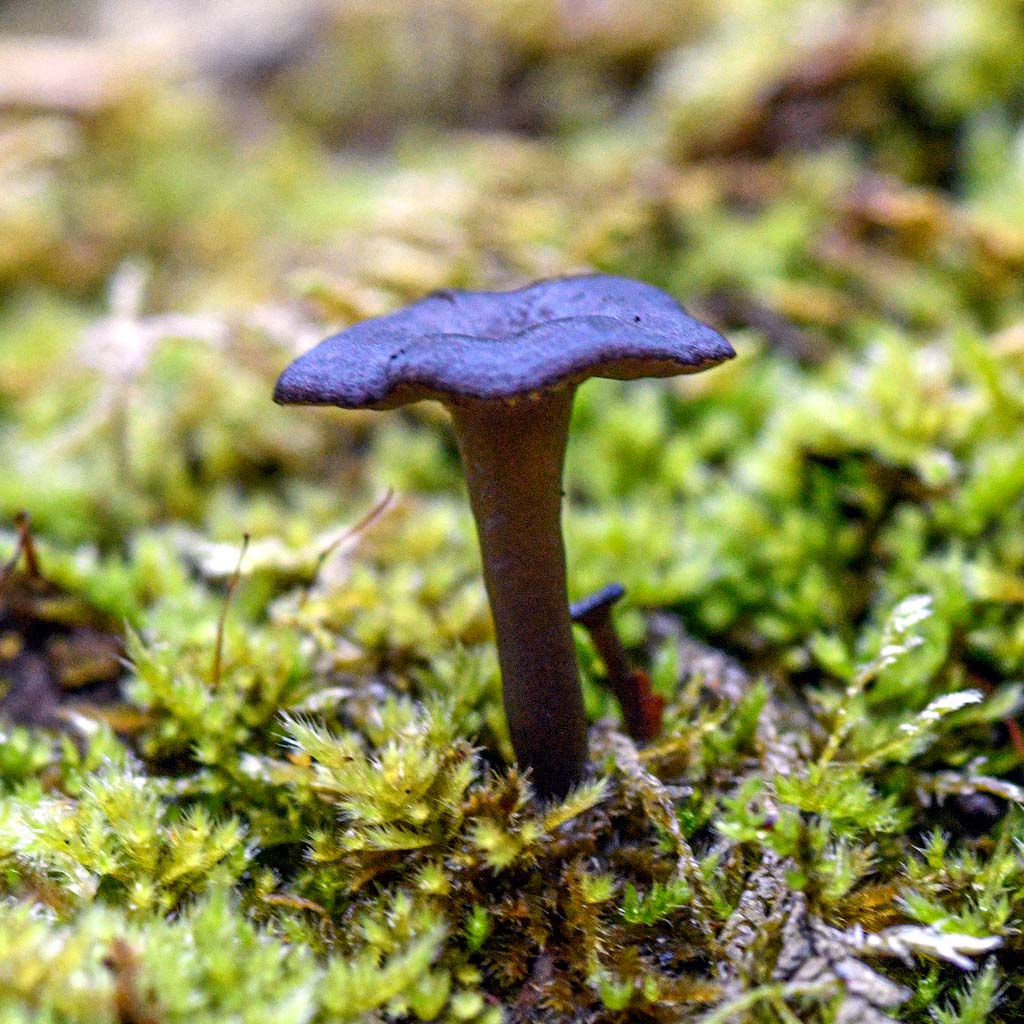
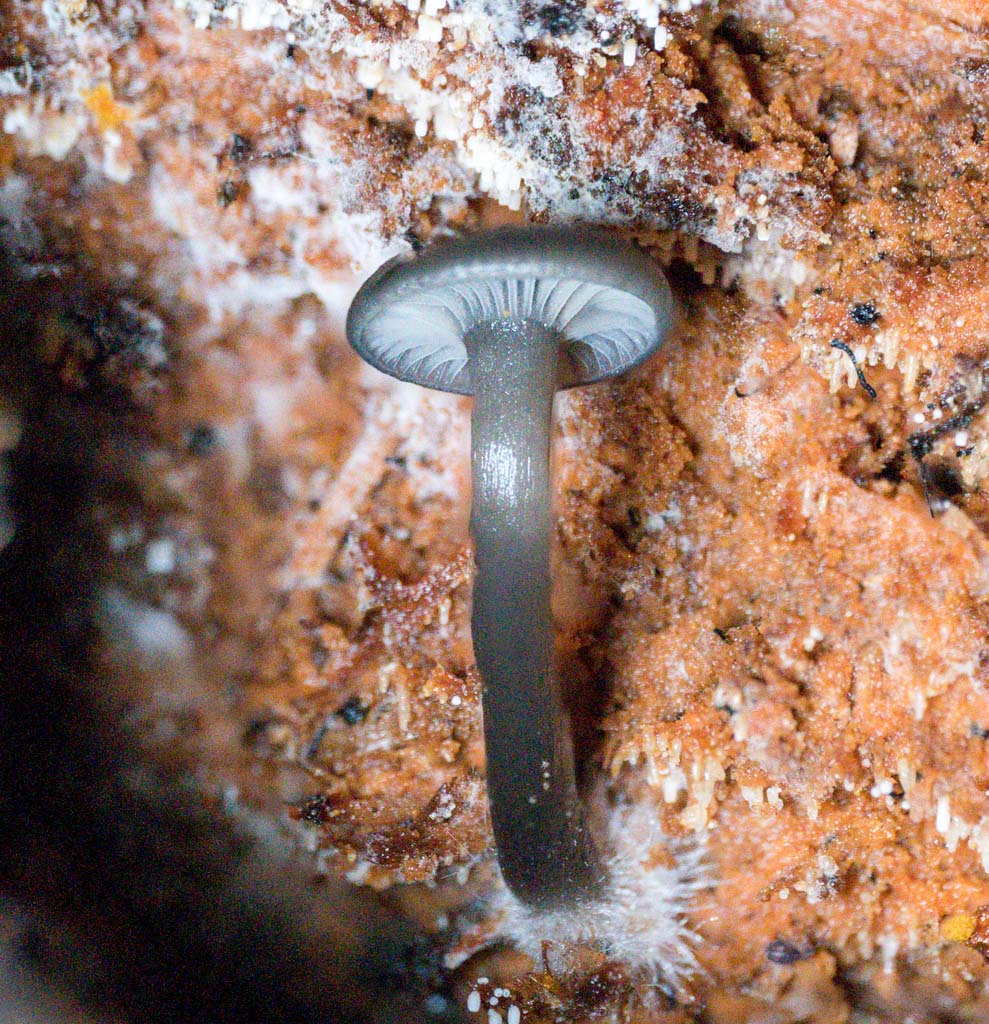
'Arrhenia2'
'epichysium PNW03' © Yi-Min Wang, 'Arrhenia2' 'epichysium
CA01' © Larry Martin, 'Arrhenia2' 'epichysium CA02'
© Jack Johnson
'Arrhenia2'
PNW04 - 3 collections from WA. It may have a scaly cap and
may develop marginate gill edges.
'Arrhenia2' PNW05 - on soil,
with highly contrasting colour striations on the cap. 1 collection
from OR.
'Arrhenia2' PNW13 - on moss, small and also very
contrastingly striate. This matches some (but not all) EU sequences of
Arrhenia obatra EU, and looks like it could be Arrhenia hohensis
WA, which may or may not be a synonym. We need some type sequences to
verify what this is.
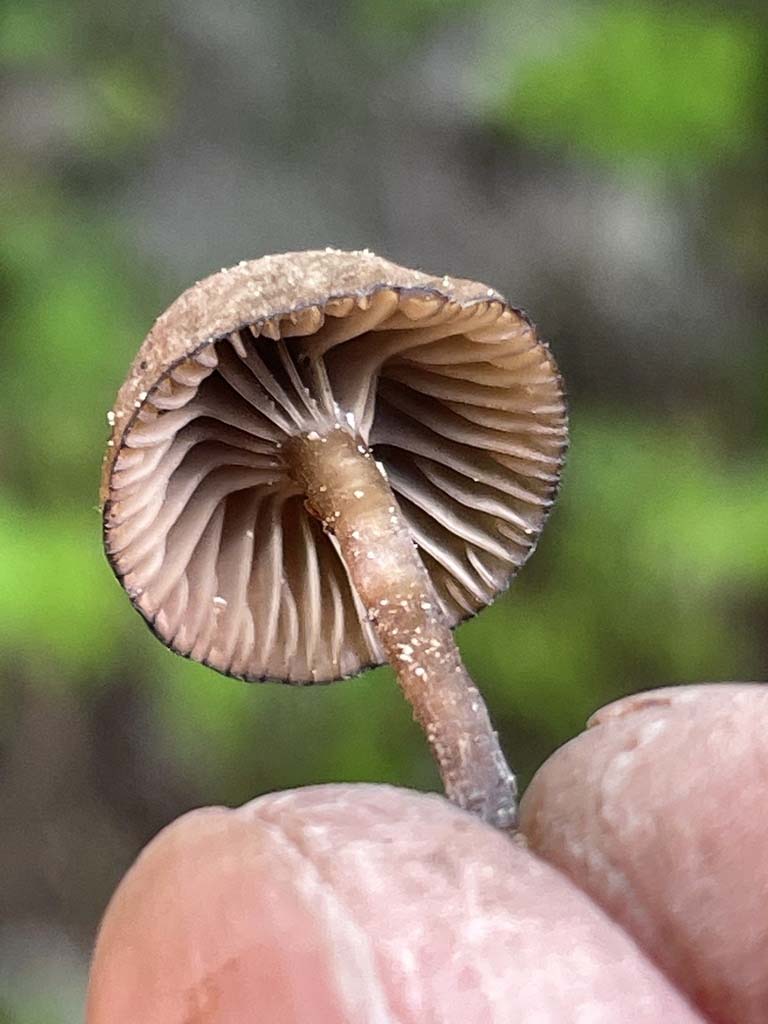

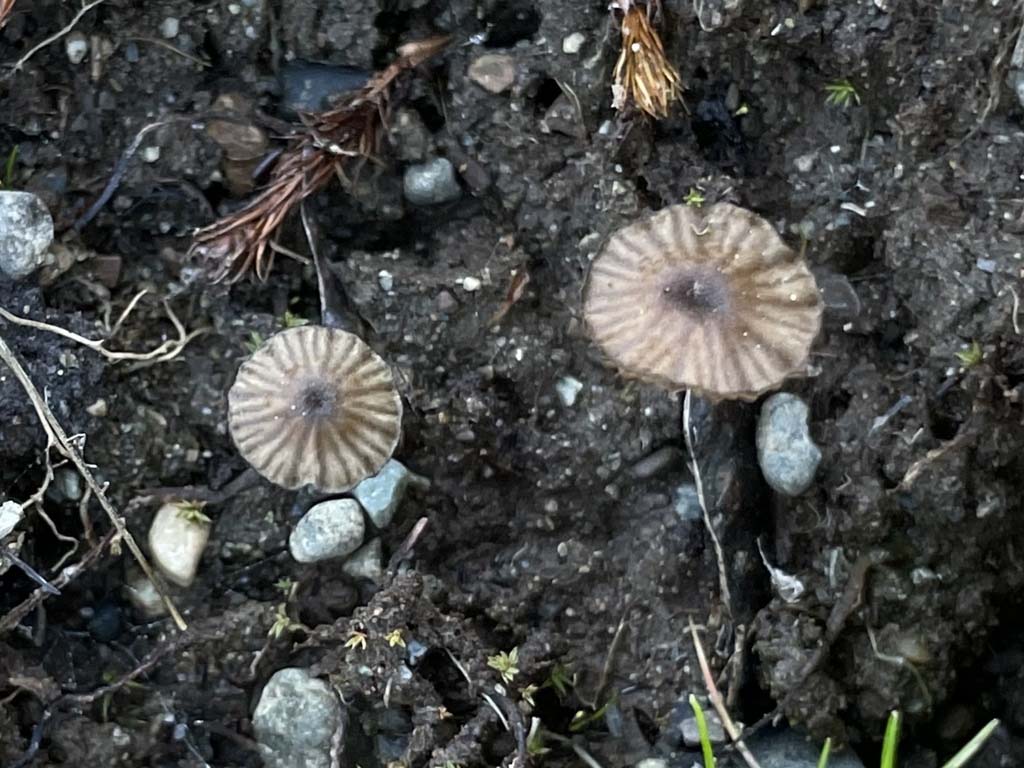
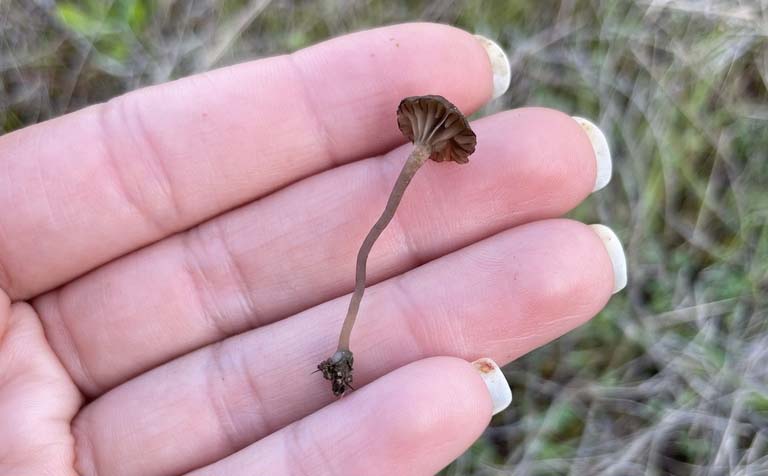
'Arrhenia2' PNW04 © Yi-Min Wang and Matthew Koons, 'Arrhenia2' PNW05 ©
Connor Dooley, 'Arrhenia2' PNW13 © Lauren Ré
(2 images)
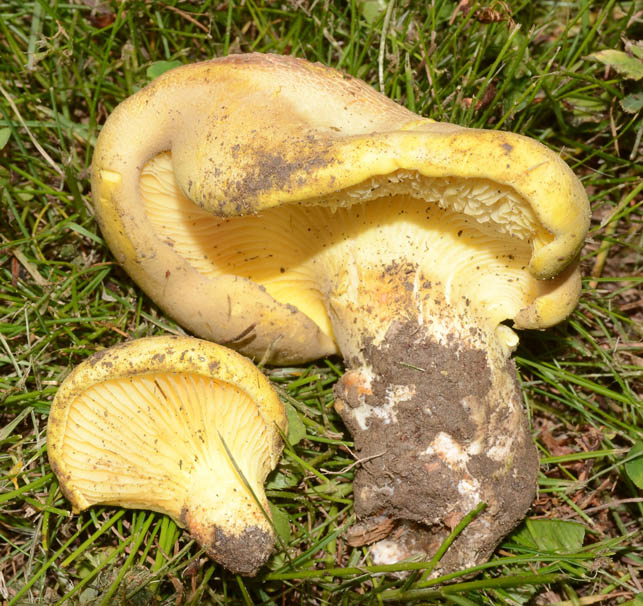
 Ampulloclitocybe - click to expand
Ampulloclitocybe - click to expand
 Arrhenia s.l. - click to expand
Arrhenia s.l. - click to expand
 Cantharellula - click to expand
Cantharellula - click to expand
 Cantharocybe - click to expand
Cantharocybe - click to expand
 Chrysomphalina - click to expand
Chrysomphalina - click to expand
 Hygrophorocybe s.l. - click to expand
Hygrophorocybe s.l. - click to expand
 Lichenomphalia and Protolichenomphalia - click to expand
Lichenomphalia and Protolichenomphalia - click to expand
 Pseudoarmillariella - click to expand
Pseudoarmillariella - click to expand
 Spodocybe - click to expand
Spodocybe - click to expand